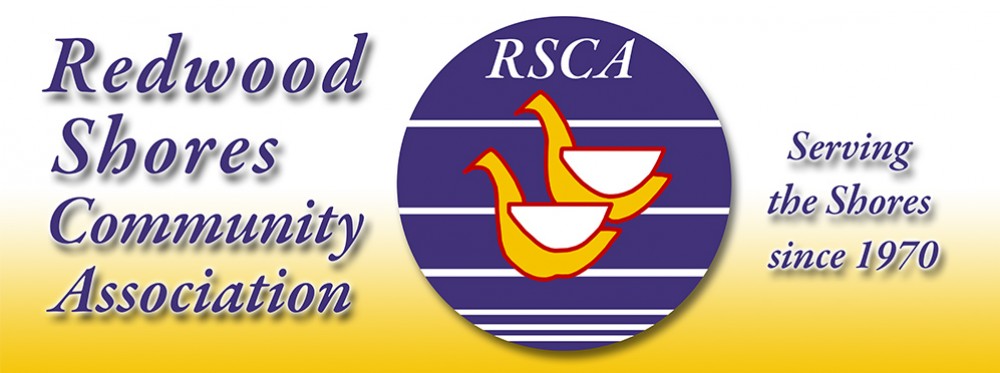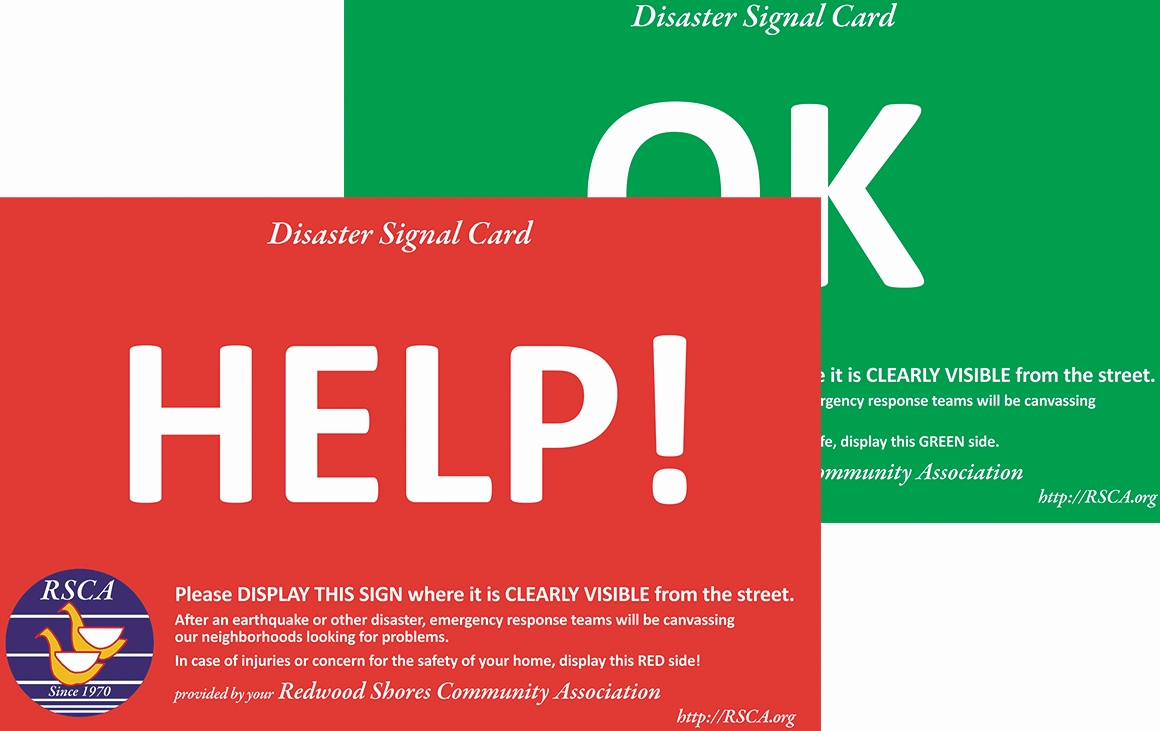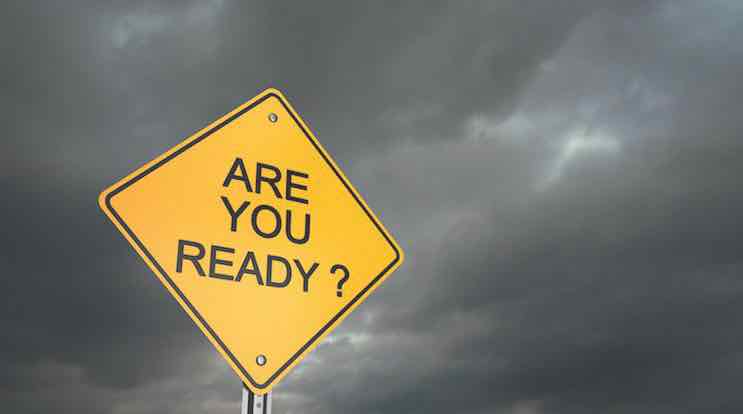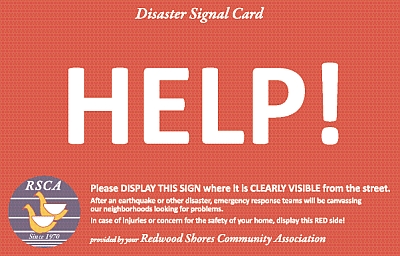Tag Archives: Redwood Shores Community Emergency Response Team (CERT)
Show Your Cards on November 13th!
Emergency Preparedness
Redwood Shores Community Association (RSCA) is dedicated to ensuring that residents and businesses are prepared for emergencies that may arise in our area.
The Community Emergency Response Team (CERT) Program educates people about disaster preparedness for hazards that may impact their area and trains them in basic disaster response skills, such as fire safety, light search and rescue, team organization, and disaster medical operations. Using the training learned in the classroom and during exercises, CERT members can assist others in their neighborhood or workplace following an event when professional responders are not immediately available to help. CERT members also are encouraged to support emergency response agencies by taking a more active role in emergency preparedness projects in their community. Continue reading
Are You Ready Disaster Preparedness Session
November is Disaster Preparedness Month
In addition to being the advocate for issues affecting Shores residents and businesses, RSCA is dedicated to helping everyone stay safe and prepared for possible disasters or emergencies.
There are some safety issues unique to the Shores and residents should be aware and plan ahead to stay safe. The November edition of The PILOT includes some helpful tips. For many years, RSCA has provided each household with a RED/GREEN Disaster Signal Card designed to help emergency responders quickly assess who needs immediate help and who is OK. Again this year, it is printed on the back cover and inside back cover of this PILOT.
Keep this card where you can locate it quickly!
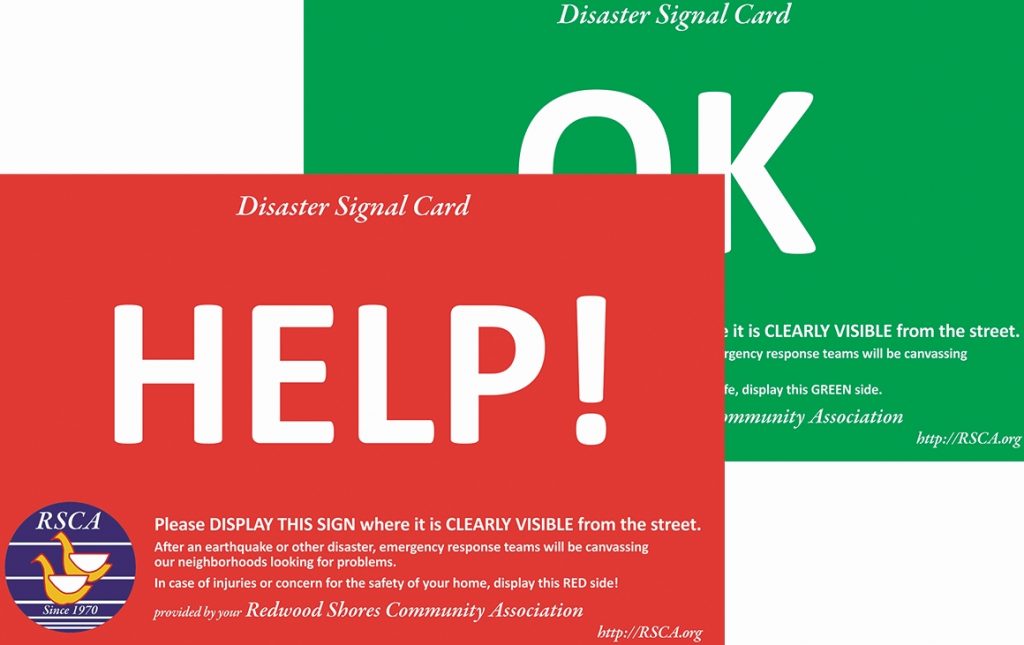
Also keep tape nearby so that you can quickly put it where it can be seen clearly from the street. This may be in a front window or on your front or garage door depending on the layout of your particular neighborhood. Especially if you need assistance, this card will help you get the quickest response. The card should not be displayed year-round.
“Show Your Cards” Drill on November 17th!
On Saturday, November 17th local CERT members will gather with RCFD Emergency Preparedness Outreach Coordinator, Christy Adonis to conduct a “windshield survey” looking for the GREEN/OK cards displayed where they can be seen from the street. “Show Your Cards” on November 17th to show your awareness of Shores issues and that you are reading The PILOT, and show support for the CERT program that is in transition from Redwood City and San Carlos to San Mateo County.
With changes in city leadership and uncertainty about further public safety cut-backs, it is more important than ever for Shores residents to know how to prepare their homes and families for disaster. Suggestions and checklists are included in the November edition of The PILOT to help you prepare for a range of situations. Please take the time to read, plan and make sure that your family, friends, neighbors and colleagues are safe and prepared.
Community Emergency Response Team (CERT) Program Transition Meetings & Survey
(The following was provided by the City of Redwood City)
Along with the Fiscal Year 2018-19 Adopted Budget, the City Council approved the transition to a shared service approach with San Mateo County for the Community Emergency Response Team (CERT) program to reduce costs to the city, increase efficiency, and potentially share costs of the program with other agencies in the County in the future. The County currently provides CERT training using the same curriculum as Redwood City; however, the County has expressed interest in collaborating with the City of Redwood City to create a CERT Coordinator position. The new position would focus solely on the CERT program.
In an effort to engage CERT volunteers and community members around this transition, the City of Redwood City is hosting a series of meetings to receive input/feedback on the future of the CERT program. Additionally the City has launched an online survey to gain input on the CERT program and the proposed County CERT position transition. Three meetings were conducted in August. (You can click here to read the Redwood City/San Carlos CERT Community Input Meetings Notes report.)
The next round of community meetings will take place on:
Tuesday, September 25th from 6 – 7:30pm
at the Veterans Memorial Senior Center
1455 Madison Ave., Redwood City
Thursday, September 27th from 6 – 7:30pm
at the Redwood Shores Library
399 Marine Parkway
The CERT Program Survey is available online on the Redwood City Fire Department home page.
The City of Redwood City appreciates your input and information gained will help further develop the new County CERT program.
Show Your Cards on Disaster Preparedness Day
Sunday, November 24th
For our third year in a row, the Redwood City Community Emergency Response Team (CERT) in co-operation with Redwood Shores Community Association (RSCA) will be conducting a Emergency Drill on Sunday, November 24th.
On that day, we ask residents to display the RED/GREEN signal cards that were distributed each of the past two years to every household via the Pilot. CERT teams will survey all of Redwood and Belmont Shores looking for those cards.
The Disaster Signal Card allows residents to signal for help when landline telephone, cell phone and online communications are not working. This tool for Redwood Shores will improve the ability of first responders such as fire and police departments as well as our Community Emergency Response Teams (CERT) to quickly identify homes in need of help.
The CERT teams are made up of Redwood City volunteers who have been trained in First Aid and Disaster Procedures. In an actual disaster, those teams would be looking for homes in distress. Homes that displayed a green card would be helping by allowing the teams to quickly move on.
Please help to prepare for a disaster by showing your card so that we can help you. Put them in your front window so they are visible from the street!
If you are new to Redwood Shores this year, you can request a Disaster Signal Card by sending an email to with your name and address. Please include the date that you moved into your new home.
November is Disaster Preparedness Month (2012)
Before the winter weather settles in, RSCA would like to remind everybody this November to prepare your home for the possibility of a disaster. This month’s issue of The PILOT focuses on suggestions and checklists for preparing your home. Last year, the Redwood Shores Community Association (RSCA) provided articles on many different aspects of Disaster Preparedness, but the article that was probably the most significant was the one that provided instructions on how and when to turn off your gas supply. For that reason, we are again addressing the topic of gas shut-off in this issue.
In addition, the printed version of The PILOT once again includes red/green Disaster Signal Card for newcomers to Redwood Shores and for those of you who may not have put your card aside last year. This tool will improve the ability of first responders such as the Fire and Police departments, as well as our Community Emergency Management Teams (CERT) to quickly identify homes in need of help when landline, cell phone and on-line communications are not working.

Following last year’s distribution of the signal cards, CERT held a drill that proved that all of Redwood Shores could be surveyed in as little as five hours if roads were mostly clear for travel. CERT will be holding a follow-up drill this year on Saturday, November 17th when you will be asked once again to “Show Your Cards” so that they can be seen from the street. We urge all residents to cooperate with this local disaster drill.
Everyone who lives in Redwood Shores knows that the possibility of a major disaster is real. Although there are several possible causes of a future disaster, the greatest threat is from an earthquake. The 1906 San Francisco earthquake was a once in a hundred year quake which means that we are now overdue for another major quake. Although there is nothing we can do to prevent an earthquake, you CAN prepare your home and family.
In this issue you will find information on:
- Making a family disaster plan
- Getting Information during a disaster
- Preparing your home for a big shake
- Creating a Go Bag
- Creating an Emergency Supply Kit
- Preparing pets for a disaster
- Preparedness at our schools
- Instructions on when and how to turn off your gas
In addition to informative articles dealing with preparedness, RSCA is providing a new Disaster Signal Card which will allow residents to signal for help when landline telephone, cell phone and on line communications are not working. This tool for Redwood Shores will improve the ability of first responders such as fire and police departments as well as our Community Emergency Response Teams (CERT) to quickly identify homes in need of help.
Please remove the Signal Card from this magazine and read the instructions. On Saturday, November 17th, Redwood Shores CERT will hold a Disaster Signal Card drill. Residents are asked to “Show Your Cards” (GREEN side only!) that day so they can be seen from the street. On that day CERT teams will practice surveying our neighborhoods. We urge all residents to cooperate with this local disaster drill.
Instructions on When and How to Turn Off Your Gas
If you are in the house and smell gas, you and your family should leave the house at once leaving windows and doors open behind you. DO NOT TURN ON OR OFF ANY ELECTRICAL SWITCH ON THE WAY OUT. Once everyone is out of the house, turn off the gas.
It is important to know exactly where your gas meter is located so that in the event of an emergency, you can shut it off. For a single family house, the meter will be located where it can be read by a meter reader on the outside of the house. It may be located in a cabinet that opens to the outside. As you face the meter you will see a pipe running from the ground to the meter. Approximately 6 to 8 inches above the ground there is a shut-off valve running parallel with the pipe (See diagram) Use a wrench or a gas shutoff tool (sold at all large home stores) to turn the valve 1/4 turn in either direction, until the valve is crosswise to the pipe. You will find the valve is hard to turn so use a long tool to get a lot of leverage.
DON’T TURN IT BACK ON YOURSELF. Contact PG&E to safely turn the gas back on and relight the pilots.
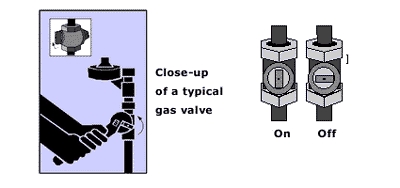
Getting Information During a Disaster
SMC Alert is an alert notification system used to immediately contact you during urgent or emergency situations with useful information and updates by sending text messages to email accounts, cell phones or smart phones. SMC Alert is free — however your carrier may charge you a fee. To register for SMC alerts go to: www.smcalert.info/index.php?ccheck=1
During a disaster the following radio stations will be broadcasting update information if they are able:
FM
- 88.5
- 92.3
- 100.1
AM
- 680
- 740
- 810
